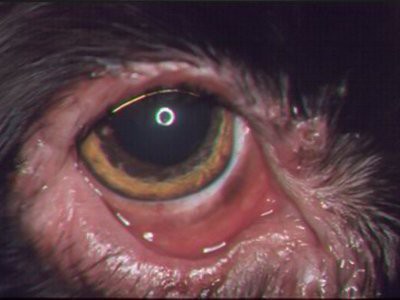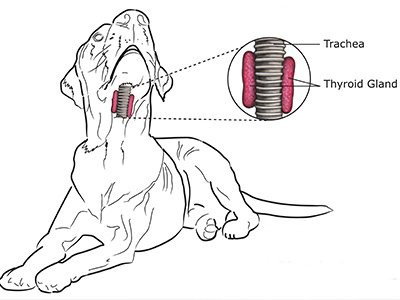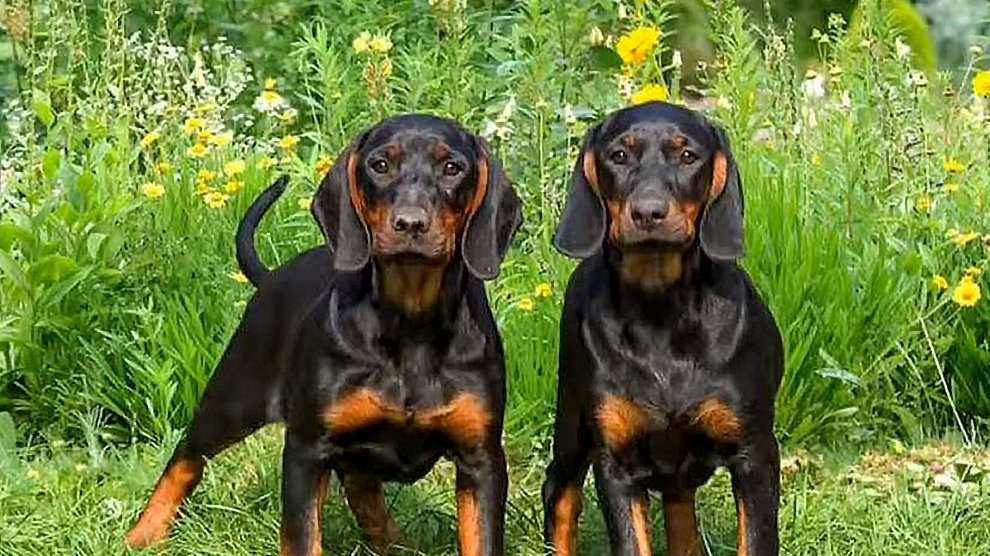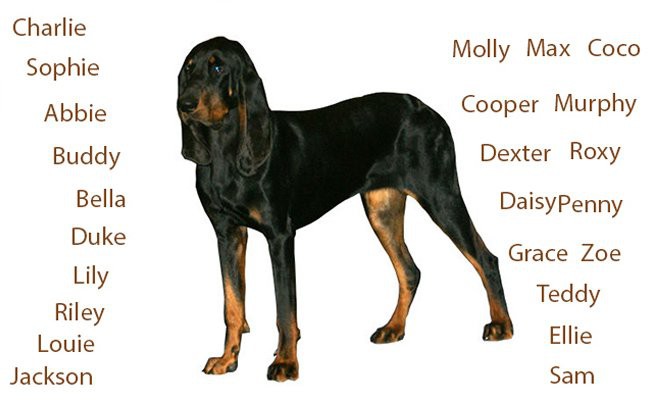Dog Pregnancy Calculator And Timeline
The coonhound dog is a scenthound dog that belongs to the hound group. This dog is majorly used for hunting in the United States Of America to hunt coons.
Many Coonhound dog breeds are the descendants of English Foxhounds. Right from colonial times, the USA started importing dogs like foxhounds and other hound breeds.
Coonhound History
Coonhounds have a long and fascinating history in the United States. They were originally bred to hunt and track raccoons, as well as other small game, in the Appalachian Mountains in the early 1700s.
These dogs were developed from a variety of European hunting breeds, including the Bloodhound and the Foxhound, as well as indigenous American dogs. Over time, different strains of Coonhounds were developed to suit different hunting styles and terrains.
Today, Coonhounds are still used for hunting, but they are also popular as family pets due to their loyal and friendly nature. The United Kennel Club (UKC) recognizes six breeds of Coonhounds: Black and Tan, Bluetick, English, Redbone, Treeing Walker, and Plott.
Coonhound Origin
The exact origin of the Coonhound breed is not known, but it is believed to have developed in the United States in the 1700s.
Coonhounds were bred from a mix of Bloodhounds, Foxhounds, and other breeds, with the goal of creating a dog that could track and tree raccoons. They were also used for other small game hunting, such as squirrels and opossums.
Over time, different types of Coonhounds were developed, each with its own specific traits and characteristics. Today, Coonhounds are primarily kept as hunting dogs or family pets, but they still retain their strong tracking and hunting instincts.
Coonhound Name Origin
The name “coonhound” comes from the breed’s original purpose of hunting raccoons. The word “coon” is a shortened version of “raccoon,” and the “hound” part refers to the breed’s classification as a type of hunting dog.
The coonhound was developed in the United States, primarily in the southern states, where raccoons were abundant and hunting was a popular pastime.
The breed was developed by crossing various types of hunting dogs, including foxhounds, bloodhounds, and other breeds, to create a dog with a keen sense of smell, stamina, and a strong hunting drive.
Coonhound Size
Coonhounds come in various sizes depending on the breed. The largest is the Black and Tan Coonhound, which can weigh up to 110 pounds and stand up to 27 inches tall at the shoulder.
The Bluetick and Redbone Coonhounds are slightly smaller, typically weighing between 45 and 80 pounds and standing 21 to 27 inches tall. The Treeing Walker Coonhound and Plott Coonhound are the smallest, usually weighing between 40 and 60 pounds and standing 20 to 27 inches tall.
Coonhound Weight: Female: 25–32 kg, Male: 30–34 kg
Coonhound Height: Female: 58–64 cm, Male: 64–69 cm
Coonhound Life Expectancy
The life expectancy of coonhounds typically ranges from 10 to 14 years, with some breeds living longer than others depending on genetics, diet, exercise, and overall health.
Coonhound Shedding
Coonhounds are moderate to heavy shedders, and their shedding can vary depending on the season. During shedding season, which usually occurs twice a year in the spring and fall, coonhounds tend to shed more heavily.
Shedding is a natural process for all dogs and is influenced by factors such as genetics, age, health, and environment. Regular grooming can help reduce shedding and keep a coonhound’s coat healthy and shiny.
Brushing your coonhound’s coat weekly with a slicker brush or shedding tool can help remove loose fur and prevent mats and tangles.
Additionally, a healthy diet and regular exercise can also contribute to a healthier coat and less shedding.
Coonhound Grooming
Coonhounds are moderate shedders and require regular grooming to keep their coats healthy and free of tangles and mats. Depending on the type of coonhound, their coat may be short and smooth or long and wavy.
Weekly brushing with a slicker brush or rubber curry comb can help remove loose fur and distribute natural oils. Bathing should only be done as needed, as frequent bathing can strip the coat of its natural oils.
Regular ear cleaning is also important, as coonhounds are prone to ear infections. Nail trimming and dental care should also be a part of their grooming routine. Overall, coonhounds require moderate grooming maintenance to keep them looking and feeling their best.
Coonhound Types
Coonhounds are a group of breeds that have been specifically bred for hunting raccoons and other small game. There are several different types of coonhounds, including:
- Black and Tan Coonhound
- Bluetick Coonhound
- Redbone Coonhound
- Treeing Walker Coonhound
- English Coonhound
- Plott Hound
Each type of coonhound has unique characteristics, but all are loyal and hardworking hunting companions.
Coonhound Mix
Coonhound mix dogs are a popular choice for those who love the Coonhound breed but may want a mix of other traits. The appearance and temperament of a Coonhound mix will vary depending on the other breed(s) in the mix.
There are many different types of Coonhound mixes. Some most popular coonhound mix dogs include
- Labcoon – A mix between a Labrador Retriever and a Coonhound. Coonhound and Lab mix may have a shorter coat than a purebred Coonhound and may be more active due to the Lab’s energy.
- Bluetick Coonhound mix – A mix between a Bluetick Coonhound and another breed, such as a Beagle or a Pitbull.
- Bloodhound Coonhound mix – A mix between a Bloodhound and a Coonhound.
- Golden Coonhound – A mix between a Golden Retriever and a Coonhound.
- Australian Coonhound – A mix between an Australian Shepherd and a Coonhound.
- Pitbull Coonhound mix – A Coonhound and Pitbull mix may have a muscular build and a high prey drive.
- German Shepherd Coonhound mix – A mix between a German Shepherd and a Coonhound.
It’s important to research both Coonhounds and the other breed(s) in the mix before adopting a Coonhound mix. Understanding the traits and needs of each breed will help ensure that the dog is a good fit for your lifestyle and home.
Coonhound Training
Training a coonhound can be a rewarding experience, but it requires patience, consistency, and an understanding of the breed’s characteristics. Here are some tips on how to train a coonhound:
- Start early: Begin training your coonhound as soon as you bring them home. This will help establish a strong foundation for obedience and behavior.
- Use positive reinforcement: Coonhounds respond well to positive reinforcement techniques such as praise, treats, and play. Use these rewards to reinforce good behavior and discourage bad behavior.
- Socialize your coonhound: Coonhounds are social dogs and need to be exposed to different people, animals, and environments from an early age. This will help them develop good social skills and reduce the risk of behavior problems.
- Use scent games: Coonhounds have a strong sense of smell, so use scent games to engage their natural abilities. Hide treats or toys around the house or yard and encourage your coonhound to find them.
- Provide plenty of exercise: Coonhounds are energetic dogs and need plenty of exercises to keep them happy and healthy. Take them on daily walks, hikes, or runs to help them burn off energy.
- Be patient: Coonhounds can be stubborn at times, so it’s important to be patient and consistent with training. Use gentle, firm guidance and avoid using physical punishment or harsh training methods.
- Consider professional training: If you’re having difficulty training your coonhound, consider enrolling them in obedience classes or working with a professional dog trainer.
Remember, training a coonhound takes time and effort, but the rewards are worth it. With patience, consistency, and positive reinforcement, you can help your coonhound become a well-behaved and happy companion.
Coonhound Temperament
- Coonhounds are known for their friendly and social personalities.
- They are often described as loyal, affectionate, and eager to please.
- As hunting breeds, they have a strong prey drive and love to follow scents, but with proper training, they can also make great family pets.
- They are generally good with children and other animals but may require socialization to avoid any aggression towards smaller animals.
- Coonhounds are also known for their high energy levels and need for regular exercise.
- Proper training and socialization, along with adequate exercise, can help ensure that coonhounds are well-behaved and happy companions.
Interesting Facts About Coonhound
- Black and Tan Coonhound is the oldest dog in the coonhound dog breed. A descendant of the Talbot Hound dog which existed in England in the 11th century during the rule of William I Duke of Normandy.
- Employed in all the departments for tracking right from the 1700s.
- Although the Black and Tan Coonhound is a hunting dog that has great skill in hunting coons, it is also good at hunting deer, bears, and mountain lions.
- During the year 1945, the American Kennel Club (AKC) officially recognized and registered Black and Tan Coonhound. It is the first coonhound dog to be registered by AKC.
- The Black and Tan Coonhound dogs can travel on all terrains, from rough land to mountainous areas.
- The Bluetick Coonhound is officially Tennessee’s State Dog.
- The Plott Hound is the only coonhound breed that is not descended from English Foxhounds, but rather from a breed of dog brought over to the United States by German immigrants.
- Famous coonhounds include Old Drum, who was the subject of a famous court case in the late 1800s that helped establish the legal rights of animals in the United States.
- Coonhounds are known for their loud, distinctive baying or barking, which they use to communicate with their handlers when on the hunt.
Coonhound Health Problems
Mostly, Coonhound dogs suffer mainly from diseases like hip dysplasia, ectropion, and autoimmune thyroiditis.
1. Hip Dysplasia
Symptoms
- Pain in the hips while doing activities like walking and running
- Difficulty rising or standing up
- Gait changes
- Loosening of the hip joint
- Avoids physical activity
- The hind limb can become disabled
- A considerable amount of weight loss in the thighs
- The shoulder muscles of the dog get bulgy because the dog shifts its weight onto its front legs
Causes
- Hereditary reasons which lead to the unusual formation of hip joints
- The condition worsens further due to environmental reasons
- Abnormal weight gain and Obesity, cause heavy strain on the joints
- A poor nutritional value in the diet
- Pelvic muscle mass
- Excess exercising
Treatment
Based on the condition of the dog, age, and overall health conditions, a veterinarian will adopt the best approach. The methods could be non-surgical or surgical.
Non-surgical methods will be undertaken, like medications to treat hip dysplasia if it is in a mild state. Medication and dietary recommendations include:
- Diet and weight management – Appropriate exercises for the dog so that the muscles around the joints of the dog become strong
- Oral nutritional supplements – Chondroitin and glucosamine are nutritional supplements that help the dog maintain its joints in a healthy condition
- Mild physiotherapy – to lower the loosening level of joints and build the muscle mass
- Non-steroidal inflammatory drugs – to provide pain relief and decrease inflammation
Surgical treatment methods
- Triple pelvic osteotomy (TPO) – Normally this surgery is only done on dogs that are 10 months or a bit younger that suffer from extremely loose joints. The pelvic bone is broken and the hip joint is realigned through this surgery.
- Excision Arthroplasty – This surgery involves removing the head of the femur and it is replaced with an implant. This treatment is performed only on dogs with degenerative joint disease.
- Total hip replacement – Deemed as one of the most effective surgeries for dogs with chronic hip dysplasia. The damaged hip joint is stripped off to be infused with a new hip joint.
2. Ectropion

Symptoms
- Reddish and Irritated eyes
- Excessive Tearing
- Pink Eye
- Discharge
Causes
- Genetic factor
- Trauma in the eye
Treatment
A veterinarian will adopt the right treatment method only after studying the dog’s age, stage of the disease, and overall health. Treatment could be in the form of medications for mild to moderate levels of the disease. In the case of the severity of the disease, surgery will be the primary option.
- Medications might include – Usage of eye drops to be dropped on the lower eyelid of the affected dog to enable lubrication of the eye
Application of ointment on the lower outer skin of the eye to avoid the drying out of the cornea and conjunctivitis - For cases that require surgery – a general veterinarian or a veterinary ophthalmologist would do the surgery. However, ophthalmologists will perform surgery on dogs that are in the extreme stage of ectropion. Generally, vets perform the surgery to make the lower eyelid get enough support and to lower its droop level.
3. Autoimmune thyroiditis

It is the cause of hypothyroidism in dogs. Autoimmune thyroiditis affects various parts of a dog’s body such as the skin, thyroid, and digestive system.
Symptoms
- Laziness
- Diarrhea
- The rise in body weight
- Hypersensitivity to cold
- Dryness in the skin
- Skin infections
- Constipation
- Aggressive behavior
- Hyper-responsive behavior
- Development of wrinkles on the forehead
Causes
- Genetic Reason
- The dog’s body creates its own antibodies that go to attack its own immune system
- Environmental chemicals could very much trigger the disease
- Vaccinations
- An illness suffered by the dog in its early life could also be a trigger
Treatment
Generally, veterinarians do not treat the autoimmune thyroiditis condition in dogs if it has normal basal T4 and free T4 levels and it behaves in a normal way. Veterinarians wait for some serious conditions to show in dogs like sudden extreme aggressiveness or occurrence of sickness.
However, certain veterinarians think that further production of thyroid-stimulating hormone in the dog will only worsen autoimmune thyroiditis.
They give lower-than-usual doses of medication to the thyroxine hormone after consideration of the optimal weight of the dog. This kind of approach will stop the dog from becoming hyperthyroid and it also lowers the TgAA levels. The TgAA (thyroglobulin autoantibodies) levels will be back to normal after a period of seven months or near to normal.
This is a lifelong treatment for the dog. Additionally, owners have to implement a comprehensive thyroid antibody profile of the dog in a periodic manner. The reason is that the TgAA level can rise due to health changes or stressors.
However, to restore the normal functioning of the thyroid, a veterinarian might call for synthetic thyroid hormone replacement therapy. Vets will recommend this therapy after analyzing the dog’s age, other health issues, and the stage of autoimmune thyroiditis.
Coonhound Food
Foods that a Coonhound dog eats:
- Potatoes
- Leafy green vegetables
- Apples
- Oranges
- Bananas
- Apricot
- Brown Rice
- Fish
- Beef
- Chicken
- Duck
- Turkey
“Never Feed Foods” For Coonhounds
- Chocolates
- Raw eggs
- Wheat
- Soy
- Corn
- Dairy Products
- Tomato
- Garlic
- Onions
- Grapes and Raisins
- High fatty meat foods
Coonhound Names
Coonhound Male Dog Names
- Hunter – Inspired by their hunting and tracking abilities
- Ranger – A nod to their wild and adventurous nature
- Duke – A strong and noble name for a loyal companion
- Jasper – A classic name that means “treasurer”
- Bear – A fitting name for a big and cuddly hound
- Diesel – A powerful name that reflects their energy and drives
- Chief – A name that implies leadership and courage
- Titan – A name that conveys strength and dominance
- Ace – A name that signifies excellence and proficiency
- Zeus – A name inspired by the king of the gods, symbolizing power and authority
- Remington – A name that means “from the ridge town”
- Maverick – A name that represents independence and originality
- Blaze – A name that connotes energy and speed
- Cash – A short and catchy name that reflects prosperity and good fortune
- Tucker – A name that means “cloth fuller” and is perfect for a hard-working hound.
Coonhound Female Dog Names
- Luna – A name inspired by the moon, symbolizing grace and beauty
- Dixie – A name that references the southern U.S. region, where Coonhounds are popular
- Sadie – A sweet and simple name that means “princess”
- Willow – A name that signifies flexibility and adaptability
- Daisy – A name that means “day’s eye” and is perfect for a sunny, cheerful hound
- Ginger – A name that connotes spunk and energy
- Athena – A name that references the Greek goddess of wisdom and war, signifying strength and intelligence
- Bailey – A unisex name that means “bailiff,” symbolizing authority and responsibility
- Nala – A name that means “successful” and is perfect for a hound that excels at tracking
- Hazel – A name inspired by the hazel tree, symbolizing wisdom and protection
- Nova – A name that means “new” and is perfect for a hound that is unique and special
- Scout – A name that signifies adventure and exploration
- Pepper – A name that connotes spiciness and zest
- Roxy – A name that means “dawn” and is perfect for a hound that is always up and ready for a new day
- Koda – A name that means “friend” and is perfect for a loving and loyal hound.
Coonhound Price
According to the AKC (American Kennel Club), the average price of a Black and Tan Coonhound dog will be around $300 to $400. However, the prices may differ based on the place of purchase.
For example, a breed center will fix a different price while the rescue shelters might sell at a lower rate.
Coonhound Breeders
Responsible breeders prioritize the health and temperament of their dogs and may be affiliated with breed clubs or organizations. It’s important to research and choose a reputable breeder to ensure the best possible outcome for you and your new Coonhound.

Click here to find Coonhound breeders in the USA.




















